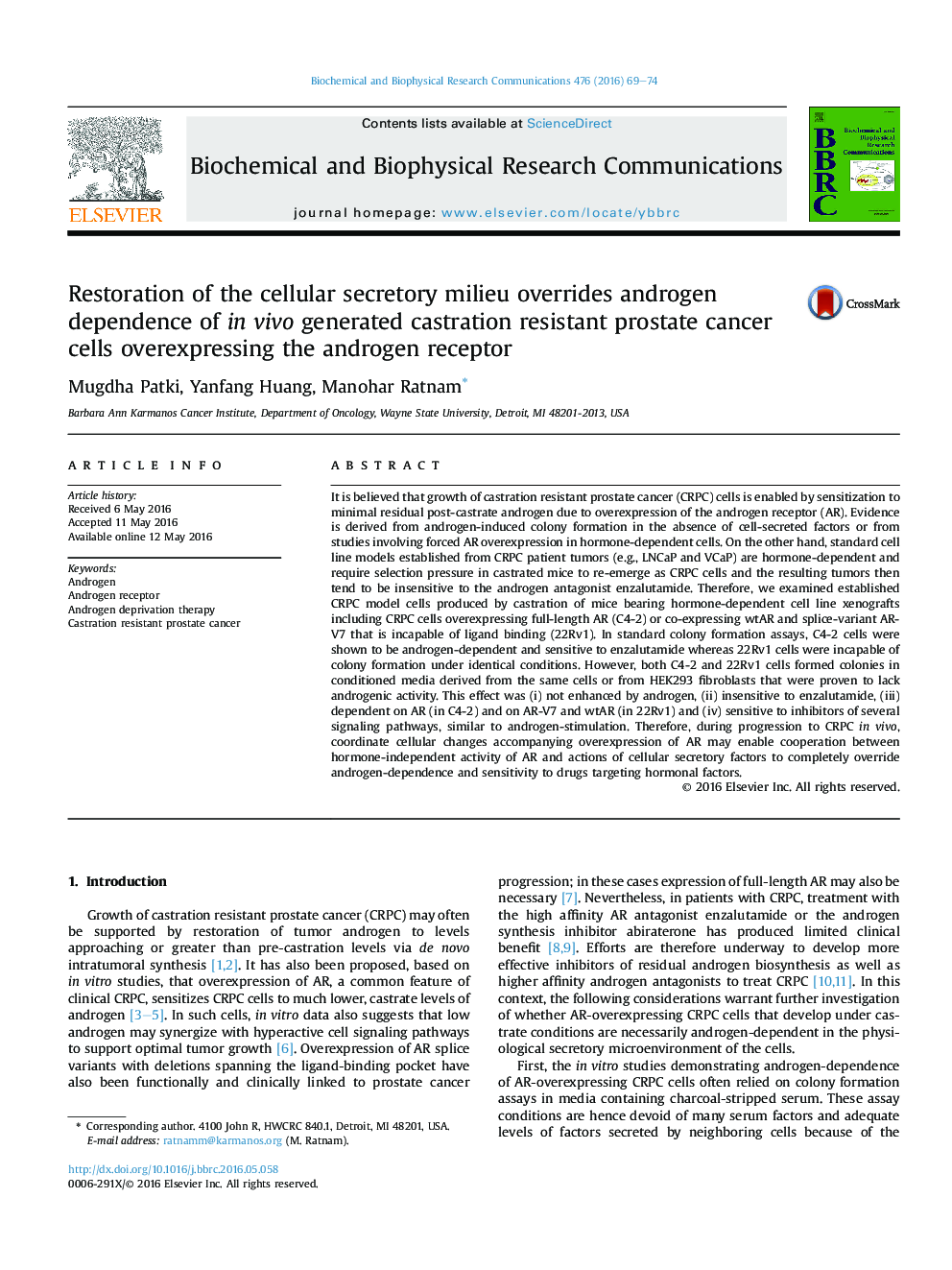| کد مقاله | کد نشریه | سال انتشار | مقاله انگلیسی | نسخه تمام متن |
|---|---|---|---|---|
| 10748032 | 1050257 | 2016 | 6 صفحه PDF | دانلود رایگان |
عنوان انگلیسی مقاله ISI
Restoration of the cellular secretory milieu overrides androgen dependence of in vivo generated castration resistant prostate cancer cells overexpressing the androgen receptor
ترجمه فارسی عنوان
بازسازی محیط ترشحی سلولی، وابستگی آندروژن به داخل سلول های سرطانی پروستات مقاوم در برابر کراتراسیون را ایجاد می کند و بیش از حد بیانگر گیرنده آندروژن
دانلود مقاله + سفارش ترجمه
دانلود مقاله ISI انگلیسی
رایگان برای ایرانیان
کلمات کلیدی
آندروژن، گیرنده آندروژن، درمان آندروژن محرومیت، سرطان پروستات مقاوم به کاستراسیون،
موضوعات مرتبط
علوم زیستی و بیوفناوری
بیوشیمی، ژنتیک و زیست شناسی مولکولی
زیست شیمی
چکیده انگلیسی
It is believed that growth of castration resistant prostate cancer (CRPC) cells is enabled by sensitization to minimal residual post-castrate androgen due to overexpression of the androgen receptor (AR). Evidence is derived from androgen-induced colony formation in the absence of cell-secreted factors or from studies involving forced AR overexpression in hormone-dependent cells. On the other hand, standard cell line models established from CRPC patient tumors (e.g., LNCaP and VCaP) are hormone-dependent and require selection pressure in castrated mice to re-emerge as CRPC cells and the resulting tumors then tend to be insensitive to the androgen antagonist enzalutamide. Therefore, we examined established CRPC model cells produced by castration of mice bearing hormone-dependent cell line xenografts including CRPC cells overexpressing full-length AR (C4-2) or co-expressing wtAR and splice-variant AR-V7 that is incapable of ligand binding (22Rv1). In standard colony formation assays, C4-2 cells were shown to be androgen-dependent and sensitive to enzalutamide whereas 22Rv1 cells were incapable of colony formation under identical conditions. However, both C4-2 and 22Rv1 cells formed colonies in conditioned media derived from the same cells or from HEK293 fibroblasts that were proven to lack androgenic activity. This effect was (i) not enhanced by androgen, (ii) insensitive to enzalutamide, (iii) dependent on AR (in C4-2) and on AR-V7 and wtAR (in 22Rv1) and (iv) sensitive to inhibitors of several signaling pathways, similar to androgen-stimulation. Therefore, during progression to CRPC in vivo, coordinate cellular changes accompanying overexpression of AR may enable cooperation between hormone-independent activity of AR and actions of cellular secretory factors to completely override androgen-dependence and sensitivity to drugs targeting hormonal factors.
ناشر
Database: Elsevier - ScienceDirect (ساینس دایرکت)
Journal: Biochemical and Biophysical Research Communications - Volume 476, Issue 2, 22 July 2016, Pages 69-74
Journal: Biochemical and Biophysical Research Communications - Volume 476, Issue 2, 22 July 2016, Pages 69-74
نویسندگان
Mugdha Patki, Yanfang Huang, Manohar Ratnam,
